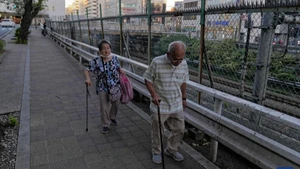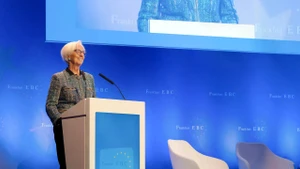The first stimulus package under Prime Minister Takaichi, who took office just a month ago, has received mixed reviews, both positive and concerning. When combined with local government and private-sector contributions, the total value of the stimulus measures is projected to reach 42.8 trillion JPY, surpassing the 39 trillion JPY of the previous year's plan.
One of the key focuses of the stimulus package is financial investment in strategic sectors such as shipbuilding and artificial intelligence (AI), with hopes of Japan maintaining long-term growth momentum.
However, analysts note that a downside to the stimulus package is that it has inadvertently caused the yen's depreciation. The weakening of the yen has led investors to rapidly sell off the domestic currency and government bonds. This aspect also reflects market concerns over Japan's rather bleak fiscal outlook.
Many experts comment that the economic stimulus is positive and demonstrates the government's effort for the people and economic growth goals, but it is poorly timed given that Japan’s public debt is already twice the size of its Gross Domestic Product (GDP).
Many experts comment that the economic stimulus is positive and demonstrates the government's effort for the people and economic growth goals, but it is poorly timed given that Japan’s public debt is already twice the size of its GDP.
Recently, the yen has consistently been in decline due to investor worries that Japan’s first female Prime Minister in history might increase bond issuance to cover budget deficits and stimulate growth.
Their concerns are not unfounded, considering Japan’s fiscal situation is currently considered the weakest among the Group of Seven (G7) advanced economies.
The weak yen drives up import prices sharply, negatively impacting the financial situation of households as well as a nation that is heavily dependent on imports for energy and food.
At a parliamentary hearing, Bank of Japan (BOJ) Governor Kazuo Ueda frankly admitted that the depreciation of the yen is negatively affecting consumer prices and heavily impacting household expenditure.
On the positive side, the weaker yen brings significant profits to export businesses, which is also an important growth driver for Japan.
Amid unpredictable financial developments, Japan's Finance Minister Satsuki Katayama issued a warning about the slumping yen. Minister Katayama reassured investors and businesses that the government would intervene immediately in currency markets to ensure stability if necessary.
The minister expressed empathy with businesses and the public over the yen hitting its lowest level against the USD but emphasised that there is no need for excessive worry, recalling that the Japanese cabinet successfully intervened in the forex market as recently as July last year.
Public opinion in Japan is speculating that the BOJ may soon decide to raise interest rates to ease the negative effects caused by the weakening yen.
From the perspective of the Japanese people, the stimulus package has many highly-rated points.
From the perspective of the Japanese people, the stimulus package has many highly-rated points, including cash handouts of 20,000 yen per child for families with children aged 18 or younger, with no income cap, requiring about 400 billion yen in government funding; and rice vouchers or gift certificates worth 3,000 yen per person, which are to be distributed by local authorities; abolition of the provisional gasoline tax, and an increase in the tax-free income threshold to reduce financial burdens on families.
Through the stimulus package, the cabinet allocates 500 billion yen to subsidise household electricity and gas bills during the first quarter of 2026 (January to March). This measure aims to reduce energy costs by an average of about 7,000 yen per household for that three-month period.
The package also supports localities with 2 trillion yen to implement measures to reduce food price inflation, which remains high.
To fund the stimulus package, the cabinet plans to approve a supplementary budget as early as November 28, aiming to secure parliamentary approval by the end of the year.
The package includes general account outlays of 17.7 trillion yen, far exceeding the previous year's 13.9 trillion yen outlays under former Prime Minister Shigeru Ishiba, reflecting the strong spending stance of Japan’s first female Prime Minister.
However, many experts remain sceptical about the effectiveness of the stimulus, warning that stimulating consumption amid inflation could have the opposite effect, causing consumer prices not only to fail to decrease but to increase further.
















